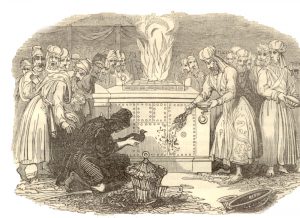 Part I (a) – Calendars, Apostles, & the Middle Wall of Partition
Part I (a) – Calendars, Apostles, & the Middle Wall of Partition
Do you believe all Scripture is inspired by Yahweh, the living God of the Bible? Do you believe it has meaning and symbolism meant to be understood by us today? If you do, then what purpose could there be for the number and order of the sacrifices I showed you in my last blog post: The Bible’s Holy Days: Pictures of the Messiah? (If you missed those charts I’ve reproduced them at the end of this blog post)
Sure, we know that Yeshua’s death and resurrection were fulfillments of the shadows or types found in the Biblical holydays of Passover, Unleavened Bread, and First Fruits, and that the fall feasts: Trumpets, Atonement, and Tabernacles – prophesy of His second coming. But why the clearly intentional use of the numbers 7, 13, and 14 in sacrifices offered during these feast days? What purpose could they have?
Part of the answer, I believe, is that numbers are the universal language and to insure that His redemptive plan could be identified and its purpose amplified, Yahweh in His infinite wisdom chose to stamp the sacrificial system of the Bible with the numbers 7, 13 & 14. Because of their importance to this redemptive message, I think of these numbers as the Messiah Factors.
What is Biblical Time?
A s I hope you’ll see in this article, the Messiah Factors are not only found in the sacrificial rites related to the Bible’s holydays of Passover, Unleavened Bread, First Fruits, Trumpets, Atonement, and Tabernacles. In fact, these numbers are incorporated into the very calendar by which these Biblical holydays are regulated.
s I hope you’ll see in this article, the Messiah Factors are not only found in the sacrificial rites related to the Bible’s holydays of Passover, Unleavened Bread, First Fruits, Trumpets, Atonement, and Tabernacles. In fact, these numbers are incorporated into the very calendar by which these Biblical holydays are regulated.
The first detailed explanation of “time” in the Bible is found in Genesis 1:14-16. Here it describes Yahweh’s heavenly Rolex and the basics of its celestial gears:
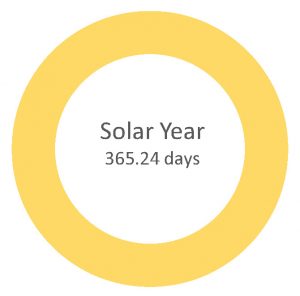 And God said, Let there be lights in the firmament of the heaven to divide the day from the night; and let them be for signs, and for seasons, and for days, and years:
And God said, Let there be lights in the firmament of the heaven to divide the day from the night; and let them be for signs, and for seasons, and for days, and years:
And let them be for lights in the firmament of the heaven to give light upon the earth: and it was so. And God made two great lights; the greater light to rule the day, and the lesser light to rule the night: he made the stars also. (Genesis 1:14-16)
According to Genesis the “lights in the firmament of heaven” divide the day and night. In this divine arrangement there were two “lights”. The greater light (the sun) rules the day and the lesser light (the moon) rules the night. These lights were made as signs (‘owth – signs or signals), seasons (appointed times or seasons), days, and years.
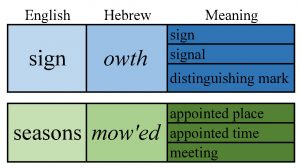 So the two main gears of Yahweh’s heavenly Rolex are the sun and moon. The sun, the light that rules the day, is a heavenly gear of 365.24 days in length. This gear is further reduced into a gear of 6 days labor and a 7th day of rest. This 6/7 gear makes 52 cycles in every solar year (plus a fraction of 1.24 days ever year). Because of the design of this gear (the earth’s position and movement relative to the sun) there are roughly 4 seasons of 13 weeks (52 weeks) in every solar year of 365.24 days.
So the two main gears of Yahweh’s heavenly Rolex are the sun and moon. The sun, the light that rules the day, is a heavenly gear of 365.24 days in length. This gear is further reduced into a gear of 6 days labor and a 7th day of rest. This 6/7 gear makes 52 cycles in every solar year (plus a fraction of 1.24 days ever year). Because of the design of this gear (the earth’s position and movement relative to the sun) there are roughly 4 seasons of 13 weeks (52 weeks) in every solar year of 365.24 days.
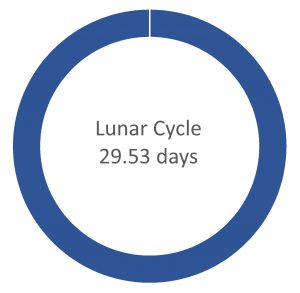 Now the lesser light in this heavenly Rolex is the moon. The moon is a gear of 29.53 days in length. Because of our heavenly watchmaker’s design, the moon has an internal cycle of waxing and waning. The visible light of this bi- monthly cycle is roughly 13 or 14 days. This nighttime gear in Yahweh’s Rolex has been flashing its signal for millenniums now. Take a look for yourself from April of this year.
Now the lesser light in this heavenly Rolex is the moon. The moon is a gear of 29.53 days in length. Because of our heavenly watchmaker’s design, the moon has an internal cycle of waxing and waning. The visible light of this bi- monthly cycle is roughly 13 or 14 days. This nighttime gear in Yahweh’s Rolex has been flashing its signal for millenniums now. Take a look for yourself from April of this year.
A 13th Month
Finally, the lunar and solar gears of Yahweh’s heavenly Rolex were designed to regulate two different aspects of the Bible’s calendar so they naturally have different cycle lengths. In other words, 12 lunar cycles of 29.53 days only equal 354.36 days. This means that a 12 month lunar “year” is roughly 11 days shorter than a solar year. To reconcile both sides of the Biblical calendar then, a 13th month is added roughly every three years. It is this 13th month that keeps lunar and solar aspects of the calendar in synchronization.
The way I like to think of it is, that the solar side of the Bible’s calendar regulates mankind’s day to day activities under the curse of sin. The lunar side of the Bible’s calendar is up there in the night sky reminding mankind every night of Yahweh’s redemptive plan for us. Reminding us that Yahweh’s Salvation, His Yeshua, has paid the price for our sins (He became our Passover – the lamb slain from the foundation of the world) and that someday He will be returning to dwell (tabernacle) with mankind – ruling from the throne of David in Jerusalem. That in part, is the message of the lunar side of the Bible’s calendar and its holydays which have been speaking to mankind for thousands of years now.
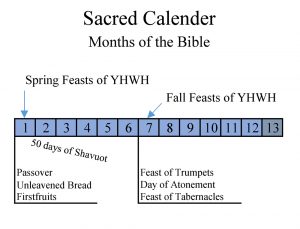 After 14 Days
After 14 Days
Keep in mind that these gears regulate the Bible’s calendar and its holydays or as Genesis 1:14 describes them, signs/signals and divine appoints. At the beginning of every 29.53 day cycle the Bible commanded Israel to offer 13 sacrifices.
At the close of the 14th day of the 1st month, the laws required Israel to keep the Passover. This sacrifice was offered on the 14th day and consumed at the beginning (even) of the 15th. This 15th day of the first month is typically a full moon and 13 additional sacrifices are required to be offered. A sacrifice of 13 is repeated every day for the 7 day feast. This series of spring holydays commenced by the Passover are shadows or types which pointed mankind to the redemptive nature of Yeshua’s first coming. They have been fulfilled in Yeshua’s death and resurrection.
In the 7th month after another 14 days of waxing light, the law required Israel to keep the Feast of Tabernacles. This feast is intriguing in its own right. It’s the only place in the Bible where the number of sacrifices are in a descending (reversed order). Starting with 13 bullock sacrifices and continuing for the next 7 days with one less sacrifice every day. The 7th day ends with 7 sacrifices for a total of 70 bullocks sacrificed. During each of the 7 days of the feast, 14 lambs are sacrificed.
Many believe, myself included, that these holydays are shadows or types of future prophetic events related to tribulation and the 2nd coming of the Yeshua. Prophecy of the future or not, in any case the Messiah Factors of 7, 13, & 14 are clearly represented in these fall holydays of the Bible.
The 12 Disciples
But let’s move on from the sacrificial rites of the Torah to a more recent Biblical example of the Messiah Factors. Have you ever thought about why Yeshua initially chose 12 disciples? Why 12? Why not 11, 7, 22, or some other number? Part of the reason according to Yeshua is, that these 12 disciples would judge (rule or govern in the coming kingdom) the 12 tribes of Israel.
And Jesus said unto them, Verily I say unto you, That ye which have followed me, in the regeneration when the Son of man shall sit in the throne of his glory, ye also shall sit upon twelve thrones, judging the twelve tribes of Israel. (Matthew 19:28)
I believe there is more to the subject than is apparent at first glance. But for context sake it should be understood that Yeshua’s mission and message was sent to the Jewish people first. The following words by Yeshua and Paul makes this clear:
These twelve Jesus sent forth, and commanded them, saying, Go not into the way of the Gentiles, and into any city of the Samaritans enter ye not: But go rather to the lost sheep of the house of Israel. (Matthew 10:5-6)
For I am not ashamed of the gospel of Christ: for it is the power of God unto salvation to every one that believeth; to the Jew first, and also to the Greek. (Romans 1:16)
It may make some people uncomfortable, but in Yahweh’s redemptive plan for mankind there is a specific order. The gospel message was sent primarily to the Jewish people first, then afterwards it expanded to include the Gentiles. As the apostle Paul rhetorically asked, “What advantage has the Jew?”
What advantage then hath the Jew? or what profit is there of circumcision? Much every way: chiefly, because that unto them were committed the oracles of God. ( Romans 3:1-2)
To the Jewish people Yahweh gave the Torah (law) which gave them the wonderful prophetic insights into Yahweh’s redemptive plan that we are exploring in these articles. It was the early Jewish apostles personally called by Yeshua which built the foundation of what we today know as the “church”. It’s interesting that we also find the Messiah Factors stamped on this aspect of Yahweh’s redemptive plan.
In other words, the original church was begun by a group of 13 men. Or more accurately by 12 Jewish men and Yeshua who was the prophesied Homo Deus or god/man.
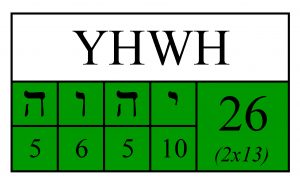 Appropriately in the Bible mankind is represented by the number 6 and the Divine by the number 7. Combined they give us the number 13. This symbolism may have something to do with the fact that the name Yahweh, by which the living God of the Bible chooses to identify himself most often in the Bible, has a numerical value in Hebrew of 26 or 2×13.
Appropriately in the Bible mankind is represented by the number 6 and the Divine by the number 7. Combined they give us the number 13. This symbolism may have something to do with the fact that the name Yahweh, by which the living God of the Bible chooses to identify himself most often in the Bible, has a numerical value in Hebrew of 26 or 2×13.
The 13th Apostle
Some years after the first 12 apostles are called, the book of acts records the final apostle personally called by Yeshua. This man, a Hebrew of the tribe of Benjamin and by religious training a Pharisee, was named Saul. Saul, who most of us know by the name of Paul, became the 13th apostle. Paul had a special commission by Yeshua. That commission was to take the good news of Yahweh’s salvation to the Gentiles.
After Paul’s meeting with Yeshua on the road to Damascus, a disciple of Yeshua named Ananias received a vision of Paul’s conversion. He was sent by Yahweh to minister unto the Paul. Notice here “the Lord” tells Ananias that Paul is to be the emissary to the Gentiles and Israel. This Paul confirms in his own words in his epistle to the Ephesians.
But the Lord said unto him [Ananias], Go thy way: for he [Paul] is a chosen vessel unto me, to bear my name before the Gentiles, and kings, and the children of Israel: (Acts 9:15)
For this cause I Paul, the prisoner of Jesus Christ for you Gentiles, (Ephesians 3:1)
The Middle Wall of Partition
As a Pharisee and a master of the Law of Moses, Paul was intimately familiar with sacrificial symbolism of the Bible. Before his conversion he was blind to Yeshua as the Messiah, but afterwards he was one of the most zealous and outspoken of the disciples. Many of Paul’s epistles use the shadow, symbolism, and type of the 2nd temple and its sacrificial service to explain Yeshua’s redemptive purpose in Yahweh’s eternal plan.
In a profoundly rich passage full of symbolism and metaphor, Paul explains to the Ephesians that it was through Yeshua that the Gentiles became part of the family of God. Remember the Jewish people have “much advantage” because they were given the “oracles” of God. In other words, they were given the Law, Prophets, and the Psalms which spoke of Yahweh redemptive plan for mankind. This mystery of Yahweh’s redemptive plan Paul explains by using facts about the temple which included the Messiah Factors.
You see, during Paul’s day only the Jewish people could approach the presence of God in the temple at Jerusalem. In fact, the Romans even allowed the Jewish people to put to death any Gentile caught trespassing beyond a boundary known as the Middle Wall of Partition. Take a moment to read this passage from Ephesians 2. This context is really important to understanding the rich symbolism of Paul’s statement to these Gentile believers. Notice especially verses 13 & 14:
For by grace are ye saved through faith; and that not of yourselves: it is the gift of God: Not of works, lest any man should boast…
Wherefore remember, that ye being in time past Gentiles in the flesh, who are called Uncircumcision by that which is called the Circumcision in the flesh made by hands; That at that time ye were without Christ, being aliens from the commonwealth of Israel, and strangers from the covenants of promise, having no hope, and without God in the world:
13 But now in Christ Jesus ye who sometimes were far off are made nigh by the blood of Christ. 14 For he is our peace, who hath made both one, and hath broken down the middle wall of partition between us;
Having abolished in his flesh the enmity, even the law of commandments contained in ordinances; for to make in himself of twain one new man, so making peace; And that he might reconcile both unto God in one body by the cross, having slain the enmity thereby:…
For through him we both have access by one Spirit unto the Father. Now therefore ye are no more strangers and foreigners, but fellowcitizens with the saints, and of the household of God; And are built upon the foundation of the apostles and prophets, Jesus Christ himself being the chief corner stone; (Ephesians 2:8-20 excerpted for brevity)
I don’t know, if the gentiles of Ephesus that Paul was addressing his letter to, understood everything Paul was trying to convey here, but underlying this statement that Jews and Gentiles become one in Yeshua is a fascinating detail regarding the 2nd temple.
You see, when Paul and Yeshua walked those ancient stones, the temple was separated from the rest of the world by two obstacles. The first of those barriers was Paul’s afore mentioned “middle wall of partition” which surrounded the temple proper. This barrier which only the Jewish people were allowed to pass through had 13 gates. Once through those gates, one had to climb 14 stairs in order to reach the temple.
The following map is a representation of the temple and its middle wall of partition by Joseph Barclay based upon the pertinent facts as described in the Talmud and by the Jewish historian Josephus. (You can click to enlarge the image)
Here are some of the sources Joseph Barclay’s map is based upon.
When you go through these [first] cloisters, to the second [court of the] temple, there was a partition made of stone all around, whose height was three cubits: its construction was very elegant; upon it stood pillars, at equal distances from one another, declaring the law of purity, some in Greek, and some in Roman letters, that “no foreigner should go within that sanctuary;” for that second [court of the] temple was called “the Sanctuary,” and was ascended to by fourteen steps from the first court. (Josephus, The Jewish War 5:193–195, emphasis mine)
In what direction were the prostrations made? Four towards the north, four towards the south, three towards the east, and two towards the occident; i.e., towards the thirteen gates. (The Babylonian Talmud, Annotated. The Publication Society of America 1895. Kindle Edition, loc. 13277, emphasis mine.)
There were thirteen curved chests and thirteen tables in the Sanctuary, and thirteen prostrations took place in the Sanctuary. The family of R. Gamaliel and of R. Hananiah, chief of the priests, made fourteen prostrations; this extra prostration was made towards the wood-chamber, because, according to an ancestral tradition, the ark was hidden there. (The Babylonian Talmud, Annotated. The Publication Society of America 1895. Kindle Edition, loc. 13256, emphasis mine.)
It should be noted that even the Jewish people where kept from direct access to Yahweh by a veil, which concealed the holiest of holies. Only once a year on the 10th day of the 7th month on Yom Kippur (Day of Atonement), the high priest was allowed access to the most sacred place and then only to make atonement for the sins of the people. As I showed in our previous article it was on this day that 14 sacrifices are commanded to be offered. Upon Yeshua’s death the veil of the temple was rent in two and this final barrier between God and mankind was forever removed. From that point forward in history, it was the blood of Yeshua which granted mankind access to the presence of Yahweh.
Jesus, when he had cried again with a loud voice, yielded up the ghost. And, behold, the veil of the temple was rent in twain from the top to the bottom; and the earth did quake, and the rocks rent; And the graves were opened; and many bodies of the saints which slept arose, And came out of the graves after his resurrection, and went into the holy city, and appeared unto many. (Matthew 27:50-53)
Fascinating material isn’t it? Well next week, Yahweh willing, we’ll complete our look at the Messiah Factors: Numerical Evidence of Yahweh’s Redemptive Plan by exploring one of the New Testament’s great enigmas. That enigma is a controversial list of New Testament names which only make sense when understood in light of Yahweh’s redemptive plan and the Messiah Factors of 13 & 14.
I hope you’ll continue this Biblical adventure with me next time.
Maranatha!
Bible Prophecy and the Law of Moses
Part I – The Bible’s Holy Days: Pictures of the Messiah
Part II (a) – The Messiah Factors: Numerical Evidence of Yahweh’s Redemptive Plan
Part II (b) – The Messiah Factors: Numerical Evidence of Yahweh’s Redemptive Plan
Part III – Seven, 70, & Sevens: Daniel 9 & the Bible’s Messianic Symbolism
FREE Book Download:
If you are interested in Biblical history and Bible prophecy, you might also appreciate my books in the Prophecies and Patterns series.
At the following link you may download one of the three books shown below. If you like the book and would like to download the other two, all I ask is that you subscribe to my blog: The 13th Enumeration – where history and the Bible meet with evidence for the promised Messiah Yeshua (Jesus).
Rest assured I won’t share your email or spam you with advertisements or other requests. Just every couple of weeks I’ll share with you my love of Biblical history and Bible Prophecy. Should you decide you no longer wish to be a subscriber you can unsubscribe at any time.
Click the following link to download your Free book: Book Download
I hope you’ll join the adventure!
[DISPLAY_ULTIMATE_PLUS]
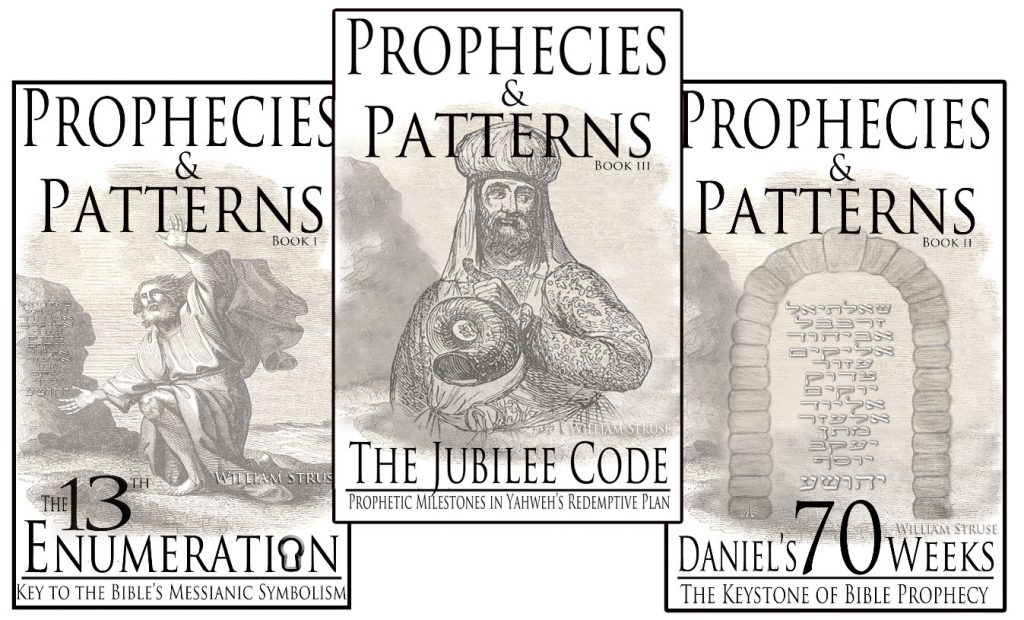
For those who missed the charts from last weeks blog post Bible Prophecy and the Law of Moses, here are the sacrifices required for Israel to offer during each of the 7 feast days during the Biblical year. See if anything stands out to you.

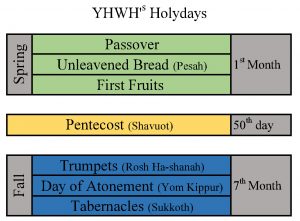
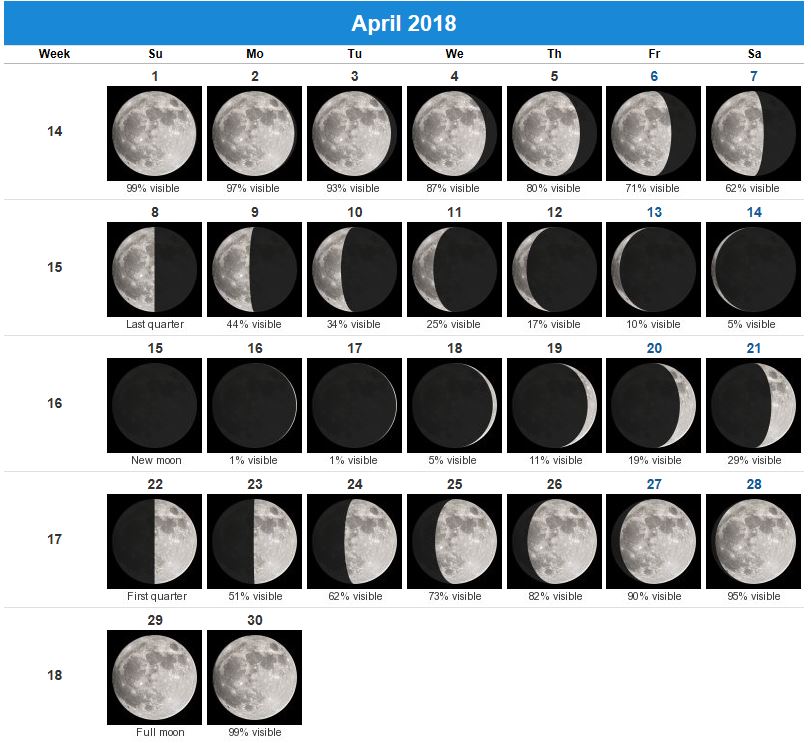
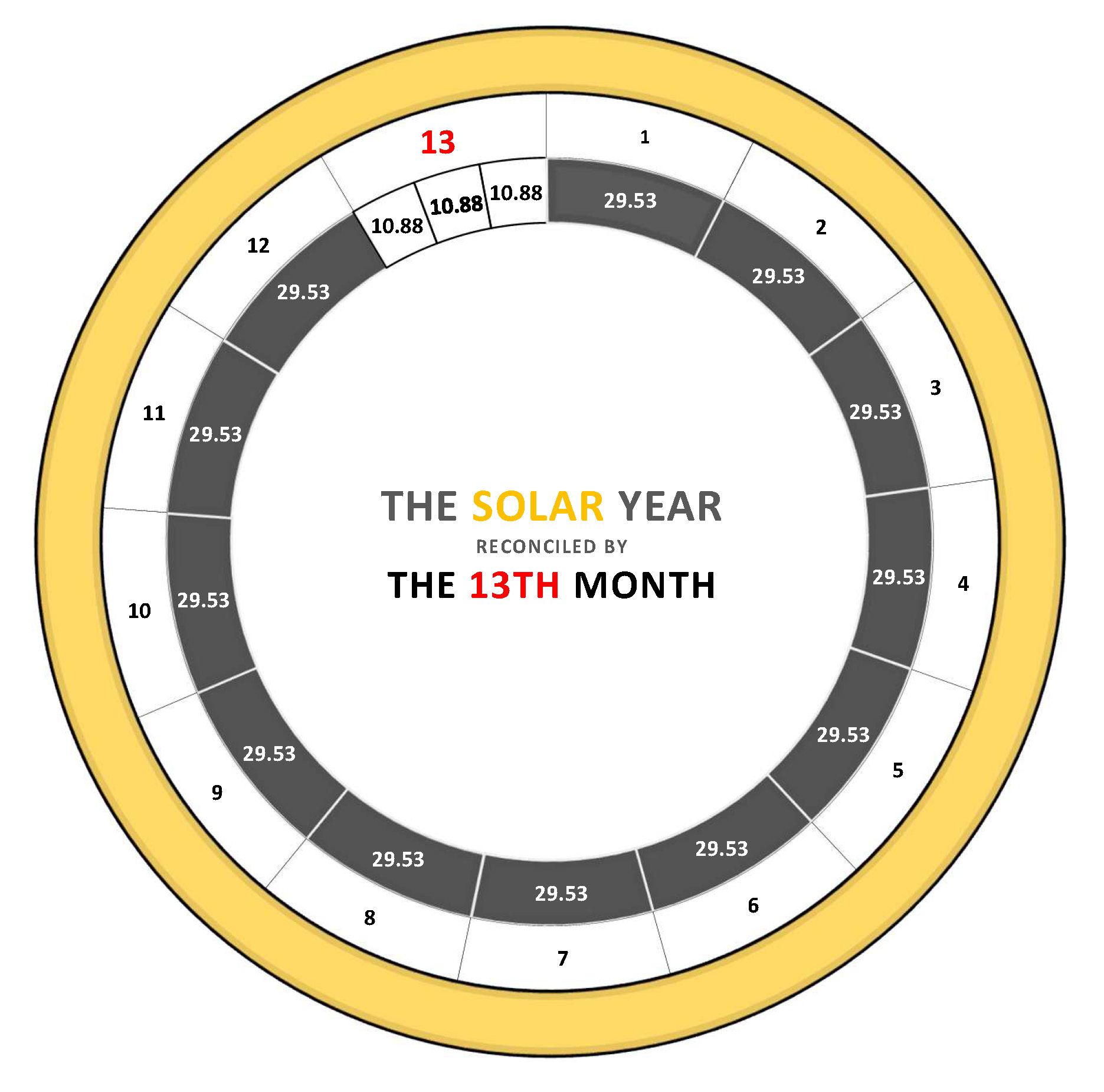
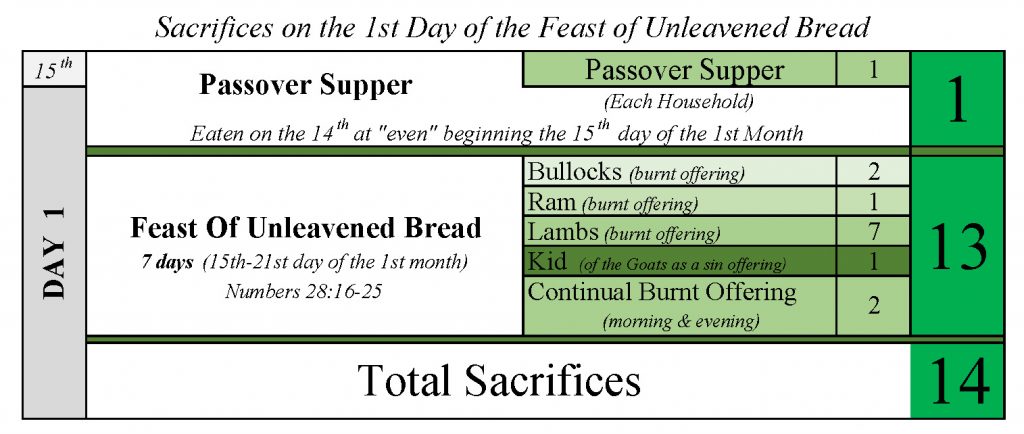
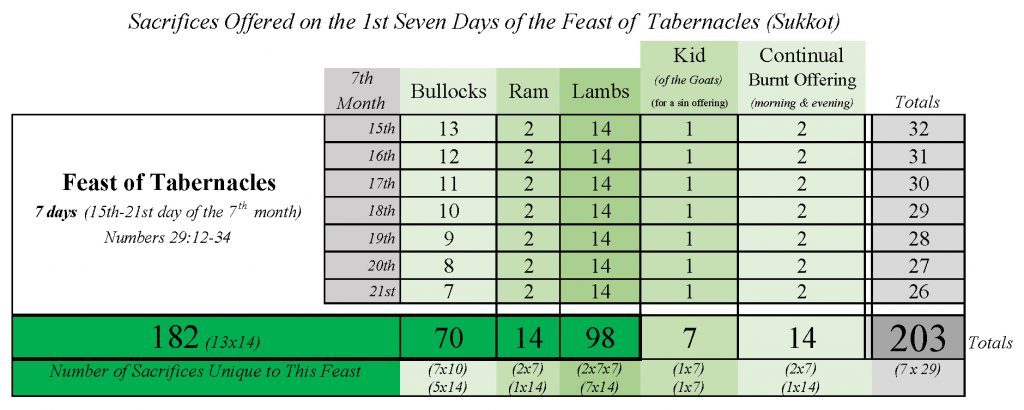
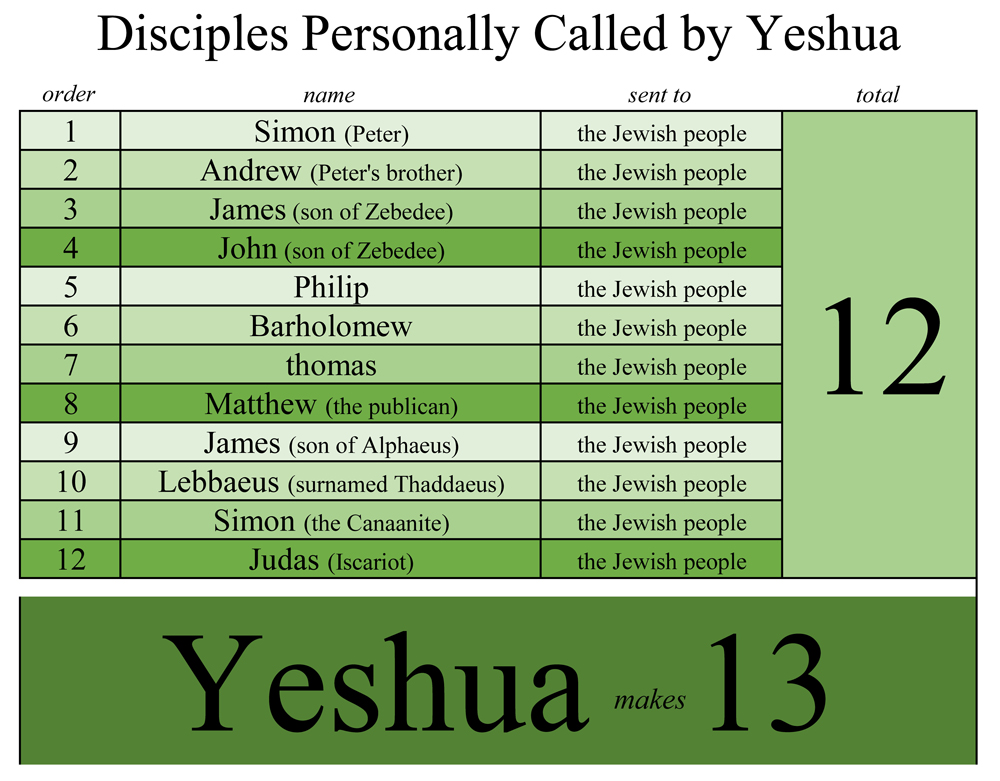
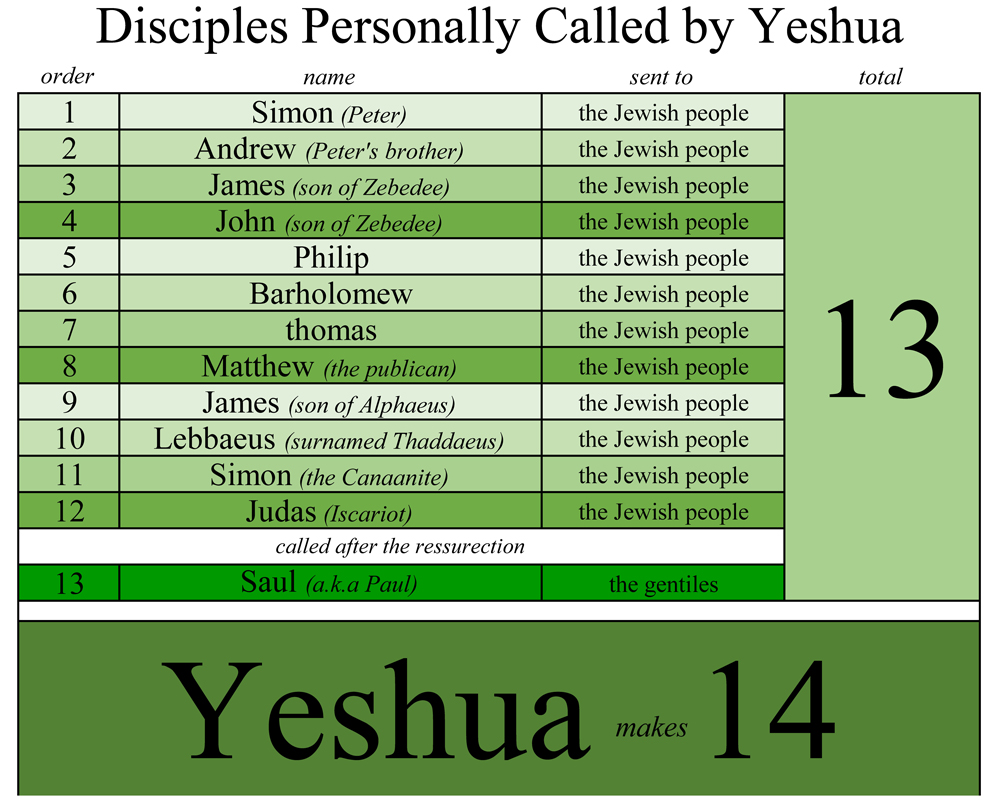
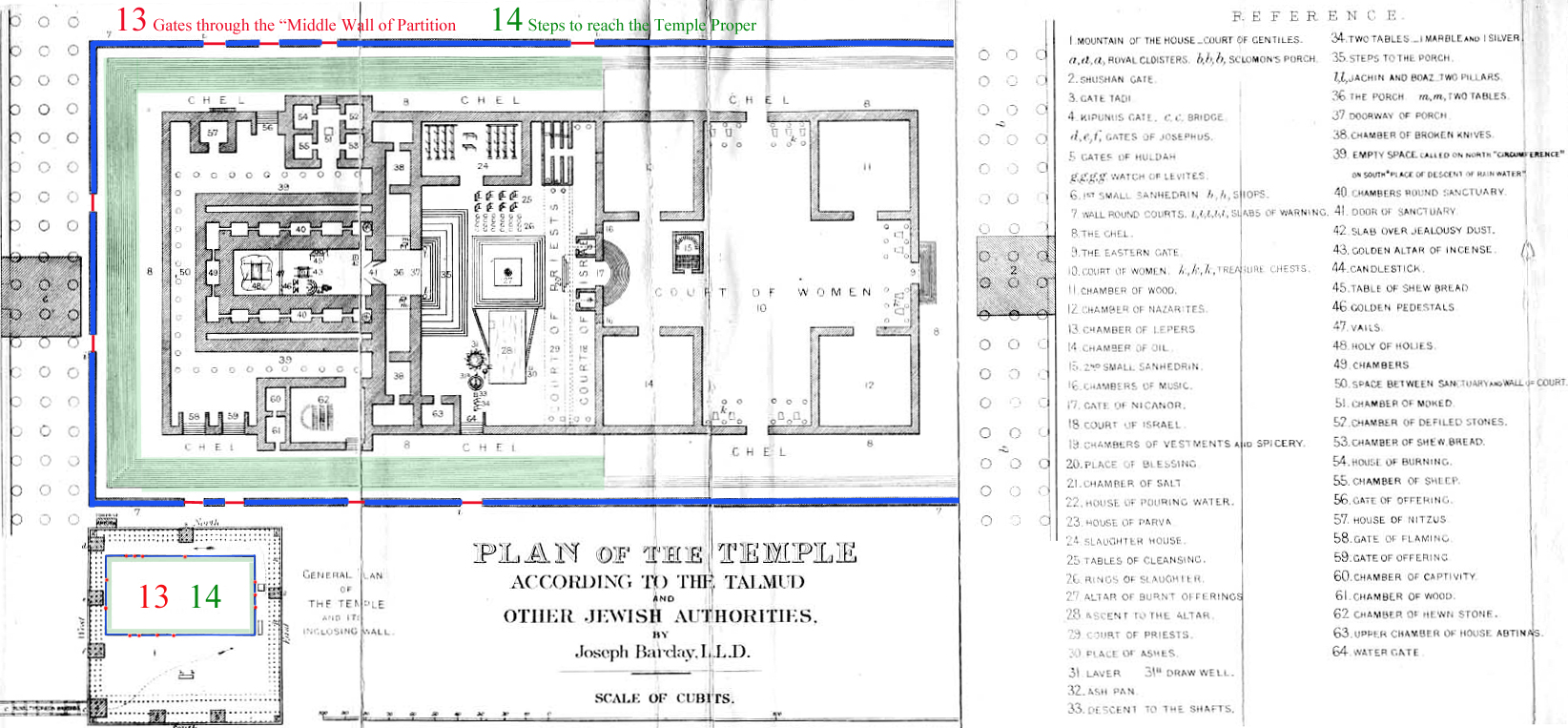









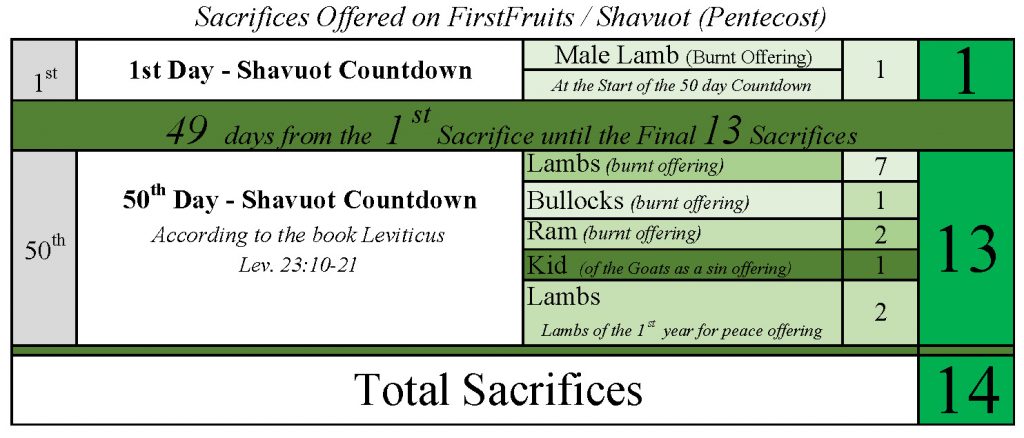
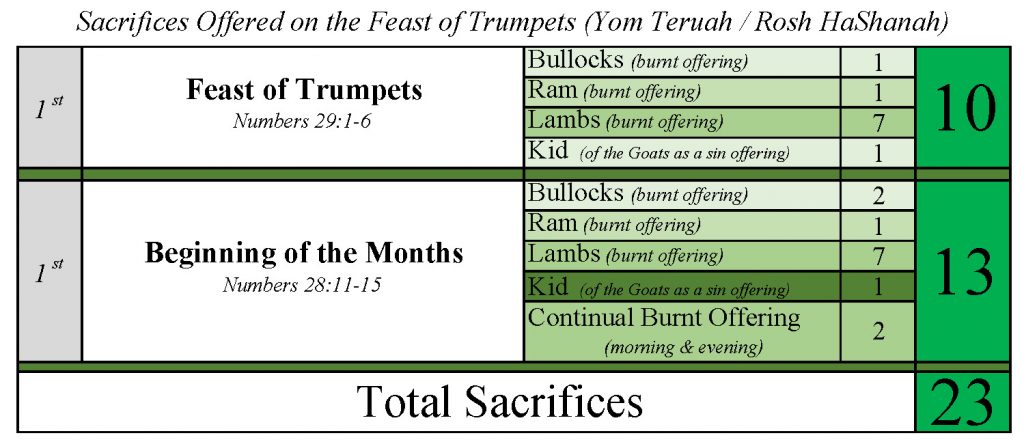


Shalom
Enjoyed your article. I have been looking at the calendar and have seen a couple things in Scripture that makes me question the validity of a thirteenth month. I am in no way claiming to be an expert in this area or to some kind of Bible scholar. Just a guy looking for some answers and would like your insight. In 1 Chronicle 27:1-15 it gives an account of “and their officers who served the king in all matters concerning the divisions that came and went, month after month throughout the year, each division numbering 24,000:” and it goes on to list twelve months and their divisions. No mention of a thirteenth month. Then in Revelation 22;2 the tree of life “which bare twelve manner of fruits, and yielded her fruit every month” again no mention of a thirteenth month. Also what are your thoughts on ” he made the stars also. (Genesis 1:14-16)” do you think the stars play any part in YHWH’s calendar? Thank you for your time
Blessings
Troy
Good evening Troy,
There is no question that a 13th month is elusive in the scripture. The only example that I know of is found in the book of Ezekiel and even there it is not plainly spelled out. Here is a link to an article I wrote on the subject. http://www.the13thenumeration.com/Blog13/2013/08/11/ezekiels-13th-month/
Regarding 1 Chron. I’m like you and scratching my head about how they made an intercalary 13th month work in their systems of service.
Regarding the Bible’s calendar I have to based it upon Gen. 1:14-16 as the primary source of how to reckon time. There it indicates that the calendar is both solar and lunar. This is confirmed in other places of the scripture.
Regarding the book Revelation and the 12 month/12 trees, again I’m not sure how it will work. Will there be some sort of intercalation, a longer month, or some other future change we are not aware of? Just don’t know.
BTW, we do know that the Biblical calendar did not wander through the seasons as does the Islamic calendar today or other ancient calendars which unhinged the lunar/solar cycles. YHWH specifically synchronized the lunar/solar calendar by commanding Israel to keep the beginning of their months in the month of “green barely” or Abib. This you could say was poor mans intercalation. By tying the Biblical months (lunar side of the calendar) to the agricultural cycle of Abib (the solar cycle) it provided a practical way to intercalate the calendar so it would not wander through the seasons.
Hope this helps. I sure there was more information in the Bible on how the finer details of the Biblical calendar where worked out. I love tracking these things down.
Warm regards and thanks for your comments,
William
I think at least a partial answer to your question may be found in how the 12 tribes are dealt with in the Bible. Well, once Joseph is split, there are actually 13 tribes, right? But if you look at each list of the tribes, only 12 are mentioned (never 13). Someone is always left out. And one list contains 11 names. So in the two cases you mentioned, Chronicles and Revelations, even though there are technically 13 months, only 12 are ever mentioned. Doesn’t there seem to be a parallel between months and tribes? It makes sense to me…
Hi William
Out of interest, where do you place Matthias (Acts 1:26) in the group of apostles? Is he discounted because Saul/Paul was God’s choice, and the eleven “jumped the gun”? Was Saul not a “true” apostle because there is no record of him having seen Jesus “in the flesh”?
Blessings, and shalom.
Brian
Hi Brian,
My charts only reflect those apostles personally called by Yeshua. After Judas death, Matthias did indeed become one of the 12. I beleive Paul was a “true” apostle, regardless of the circumstances of his calling. It’s also worth noting that in Luke 10:1 Yeshua also appointed 70 additional “laborers” to the harvest.
Warm regards,
William
Similar to Joseph (but for different reasons – a curse instead of a blessing), I think you can view Judas Iscariot’s replacement as a split (like Joseph was split between Ephraim and Manasseh) between Matthias and Paul. So after Judas dies, he is replaced by Matthias in the list, Paul makes the 13th, and Yeshua the 14th.
We should’ve known this would happen based on what happened to the 12 tribes – somehow there would be a 13th disciple just as somehow there are technically 13 tribes. EVERYTHING in the life of Yeshua is pre-written in the Tanakh.
Pingback: Seven, 70, & Sevens: Daniel 9 & the Bible’s Messianic Symbolism | Daniel's Seventy Weeks